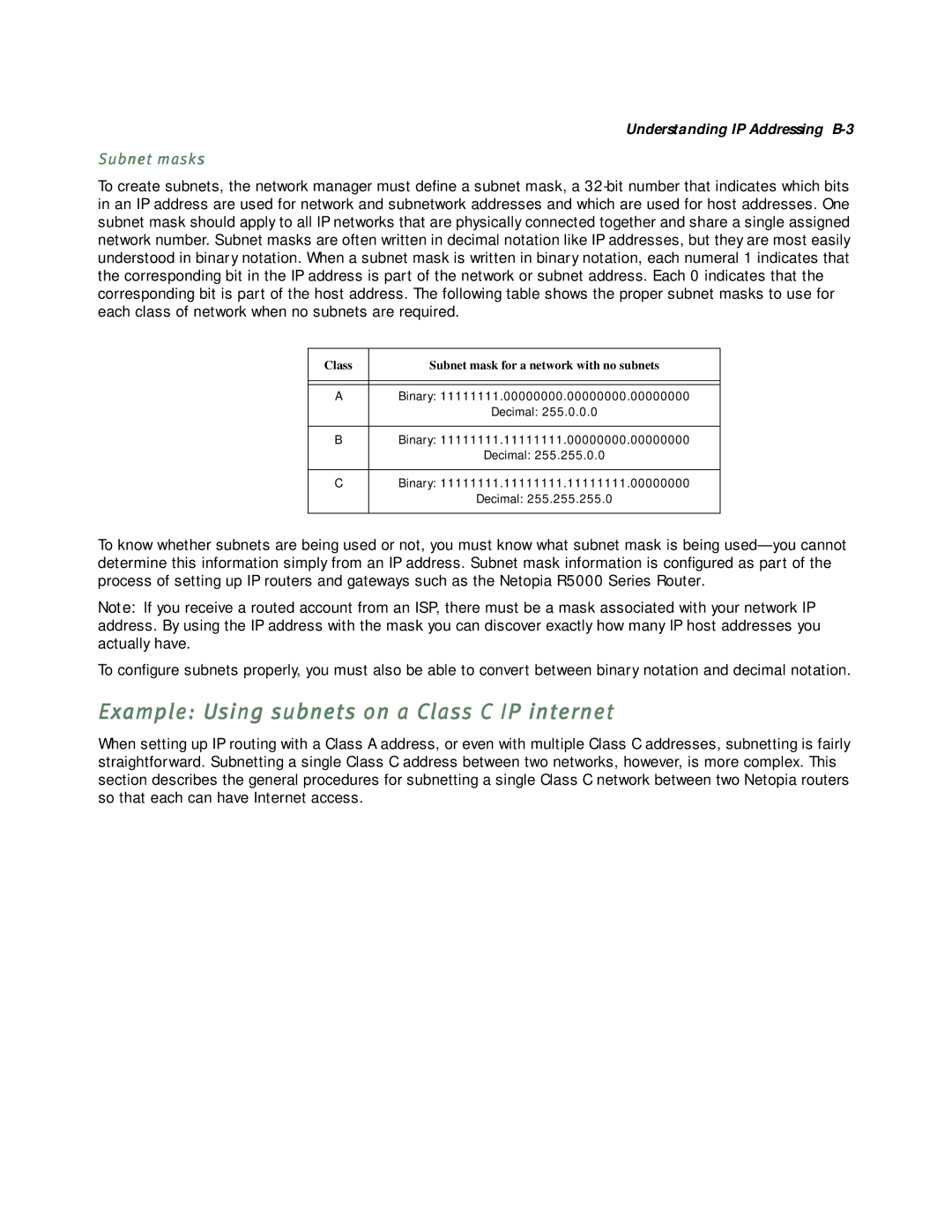
Understanding IP Addressing
Subnet masks
To create subnets, the network manager must define a subnet mask, a
Class | Subnet mask for a network with no subnets |
ABinary: 11111111.00000000.00000000.00000000
Decimal: 255.0.0.0
BBinary: 11111111.11111111.00000000.00000000
Decimal: 255.255.0.0
CBinary: 11111111.11111111.11111111.00000000
Decimal: 255.255.255.0
To know whether subnets are being used or not, you must know what subnet mask is being
Note: If you receive a routed account from an ISP, there must be a mask associated with your network IP address. By using the IP address with the mask you can discover exactly how many IP host addresses you actually have.
To configure subnets properly, you must also be able to convert between binary notation and decimal notation.
Example: Using subnets on a Class C IP internet
When setting up IP routing with a Class A address, or even with multiple Class C addresses, subnetting is fairly straightforward. Subnetting a single Class C address between two networks, however, is more complex. This section describes the general procedures for subnetting a single Class C network between two Netopia routers so that each can have Internet access.
